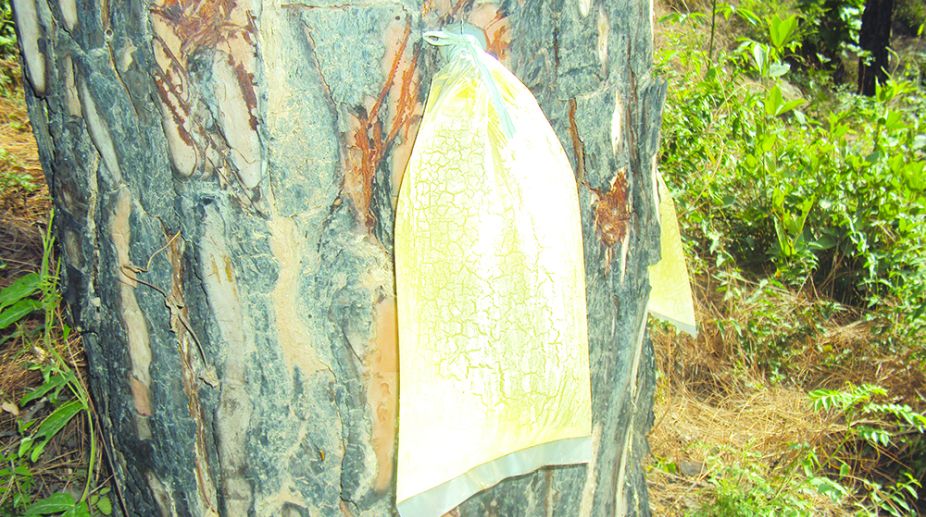J&K CM Omar Abdullah lays stress on Himachal Pradesh-type laws to protect agricultural land
The Chief Minister noted that Himachal Pradesh has adopted a strict policy in this regard and stressed the adoption of a similar policy in J&K.

In a major development which would not only minimise the damage caused to pine trees by resin tapping and increase the quality of the collected resin, a new technique, borehole, has been evolved for oleoresin extraction.
The technique would also increase the life of pine trees as it would stop drying. But it would also result in preserving the ecology of fragile Himalayan region.
Advertisement
The borehole wound cause little damage to the tree bark and since these holes are near the ground level, only a healed scar can be seen in the converted woods, resulting in no damage to the merchantable part of the tree.
Advertisement
The technique can prove to be very effective in conservation and management of pine resources in India and if implemented, the method can prove to be a major boon for the resin-based industry of the state.
The new technique has been evolved by the scientists of the Forest Products Department at the Dr YS Parmar University for Horticulture and Forestry (UHF), Nauni in Solan district of Himachal Pradesh.
he scientists had previously standardised the ‘rill method’ in the 1980’s to avoid the damage to trees at the base. However, in the past decade, intensive tapping by rill method has resulted in drying of thousands of pine trees.
It has also been observed, that the application of higher concentration of acid, used as a freshener, had adversely affected the growth of trees and even the tapped surface area is not healing.
The new method involves drilling small holes with the help of simple tools into the tree to open its resin ducts. The holes are drilled with a slight slope towards the opening, so that oleoresin drains freely.
ultiple boreholes are arrayed evenly around the tree’s circumference, or clustered in groups of two or three. Spouts are tightly fitted into the opening with polythene bags attached to it with the help of tie for resin collection.
“The new technique was developed in an attempt to overcome some of the limitations of other conventional methods,” Dr Kulwant Rai, Head of UHF Department of Forest Products said.
A key feature of the method is that a closed collection apparatus prevents premature solidification of resin acids, thereby maintaining oleoresin flow for an extended period of up to six months he said, adding due to reduced oxidation and contamination, the end product is of higher quality with substantially higher turpentine.
He said unlike the rill method, the borehole method does not need any bark shaving and simply a hole made in the basal portion of tree serves the purpose of resin extraction.
Field trials of the method have found that oleoresin yields in pine averaged 600-900 g per borehole or nearly two kg per tree with three boreholes.
The average yield per tree is almost the same if numbers of boreholes on a tree are adjusted as per the maximum carrying capacity of the tree. The method also allows tapping of lower diameter trees depending upon their potential of production without having any impact on their health.
The crown fire hazards incidents are also less because there is no hard resin accumulation on the main stem and spread of ground blaze can be easily avoided by removing the bags well in time.
esides this, the rosin and turpentine oil obtained from borehole method is of very good quality, which can fetch higher prices in the market.
In addition, to tackling the problems of tree health, labour requirements and costs for borehole tapping are significantly lower than conventional methods.
Advertisement